
LED LIGHTING FOR RUGBY PITCHES MUST MEET SPECIFICATIONS DEFINED BY THE FRENCH RUGBY FEDERATION (FFR) FOR EACH CATEGORY OF PITCH. OVERHEAD LIGHTING ON POLES IS OFTEN USED AND MUST THEREFORE BE DIMENSIONED TO GUARANTEE PRECISE AND EVEN DISTRIBUTION OF LIGHT OVER THE WHOLE PITCH.
4-pole side lighting/strong>
6-pole side lighting
Corner lighting
Lighting a Rugby pitch :
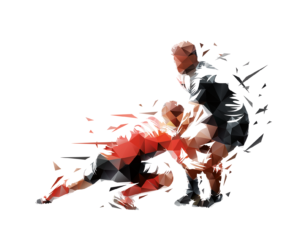
Rugby pitch lighting depends largely on how the pitch is used. The French Rugby Federation recommends a certain level of light depending on whether it is a local pitch used for training, or a pitch used for regional or national competitions. The FFR classifies pitches according to several levels (categories E5, E4, E3, E2, E1).
When installing or upgrading rugby pitch lighting, we generally use high-power LED floodlights, with narrow angles of diffusion to evenly distribute as much light as possible over the pitch.
This is achieved by their overhead installation at a distance from the pitch in order to light up the whole playing area.
We use the Goliath range of floodlights for rugby pitch lighting.
The Speqtris Sport range of fixtures for rugby pitch lighting :
To light rugby stadiums or large outdoor sports fields on poles, we mainly use the following products from the dedicated Speqtris Sport lighting range : :
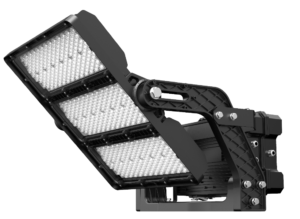 |
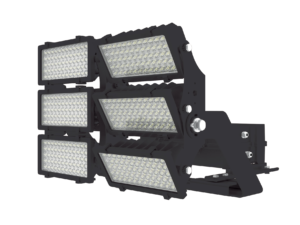 |
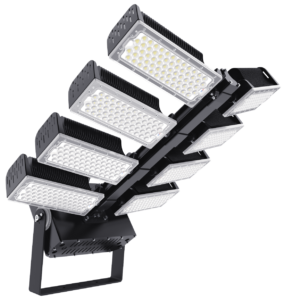 |
| Goliath LED Floodlight | Helios LED Floodlight | Cronos LED Floodlight |
Illuminance :
Rugby pitch lighting is defined by the French Rugby Federation in its technical specifications.
Some rugby pitches equipped with lighting must meet specific illuminance criteria depending on their use and category.

Lighting around the pitch :
To enable players and referees to use the whole playing area, the illuminance level at 1.5m from the touchlines and goal lines must not be less than 90% of the illuminance level measured at the reference points on the pitch (“A” point on the measurement diagram).
Horizontal lighting uniformity factor :
Average illuminance called Eh is the arithmetic mean of the photometric measurements taken on the ground according to the 36-point diagram for categories E1 and E2 or the 25-point diagram for categories E3 / E4 and pitches used for training.
To avoid any dark areas affecting play during a match, the horizontal illuminance uniformity factor (Emin/Eave) for all lighting installations, defined as the ratio between the illuminance of the least illuminated point and the average horizontal illuminance over all 25 points (or 36 points for categories E1 and E2), may not be less than 0.70 for all categories.
Lighting point measurement diagram for Rugby :
For Top14 (E1) and Pro D2 (E2) rugby pitches, the reference photometric measurement diagram is based on 36 points.
Here we show the photometric measurement grid with 25 points for E3 / E4-category pitches and training pitches. Measurements are taken on the ground according to the grid below.
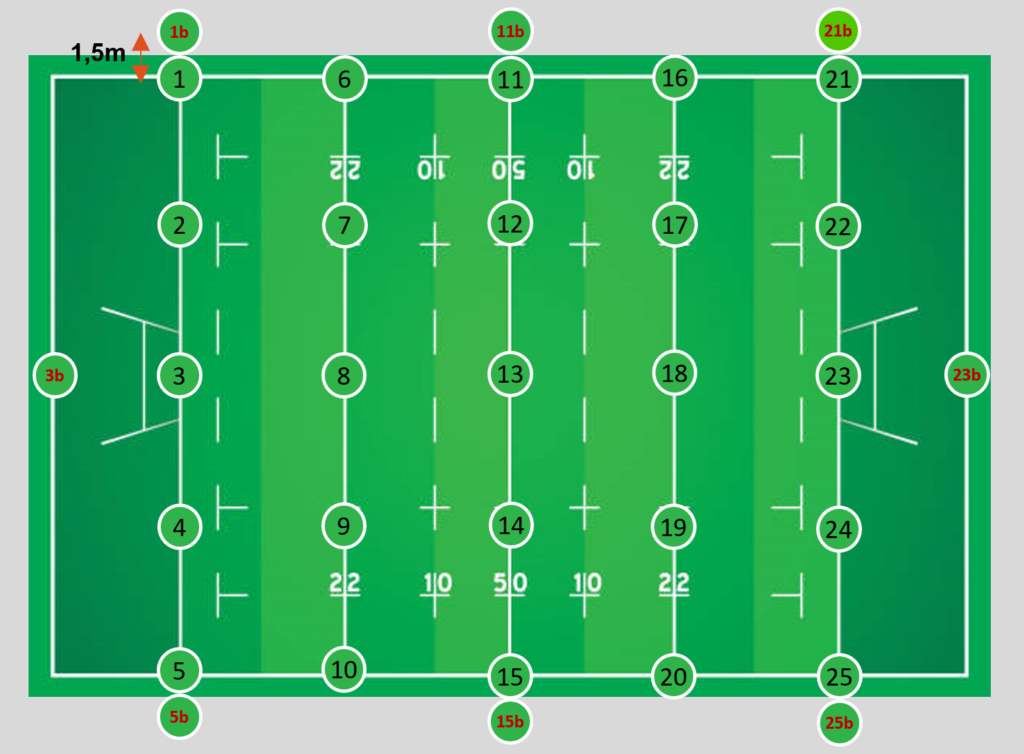 |
Main layouts of lighting poles and applicable rules :
Under no circumstances may lighting equipment be suspended over the pitch.
The light fixtures are often installed on poles. Other linear layouts on grandstand roofs may also be suitable.
To meet the Federation’s specifications, the layout of poles must comply with the following rules:
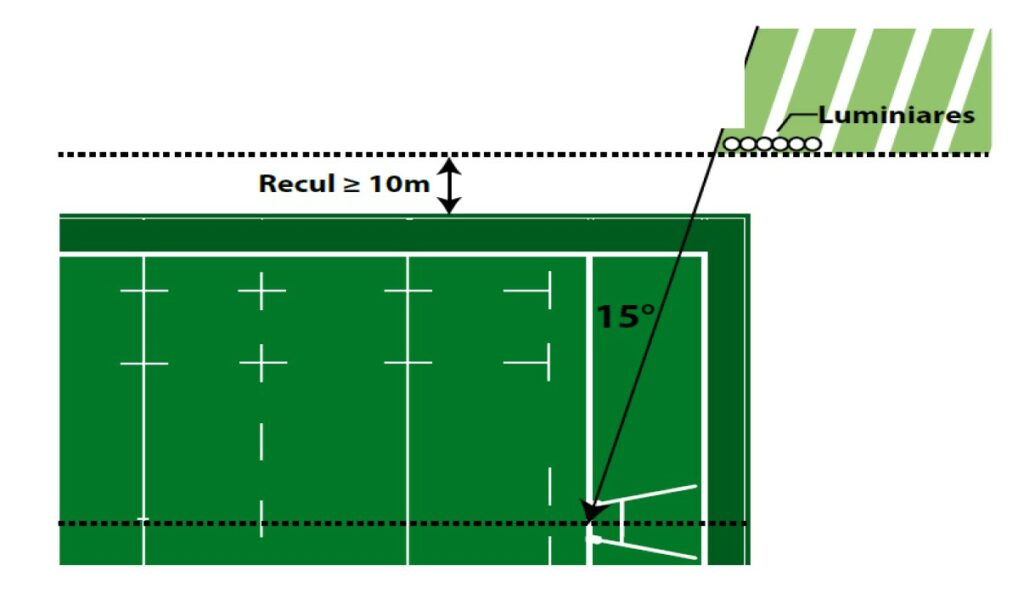
WITH OVER 10 YEARS’ EXPERIENCE IN THE FIELD, WE HAVE DESIGNED A RANGE OF LIGHTING LAYOUTS TO SUIT EACH SPORT.
THIS TOOL PROVIDES QUICK ACCESS TO THE PHOTOMETRIC STUDIES CORRESPONDING TO YOUR PROJECT TO HELP YOU DEFINE AND PROPOSE THE RIGHT EQUIPMENT FOR THE LIGHTING RESULT YOU WANT.
Dimensions of a Rugby Pitch :
Area of play
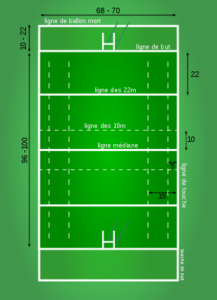
The pitch surface is usually grass or artificial turf, although this is less frequent. Rugby can be played on snow, provided that the snow and the surface beneath it are safe. Permanently hard surfaces such as asphalt or cement are not permitted.
Pitch dimensions
The field of play is a rectangle measuring between 94 and 100 metres long and between 68 and 70 metres wide. The in-goal areas are at the ends of the field of play. This is where the ball must be grounded to score a try. The in-goal areas must be between 10 and 22 metres long. The whole field of play plus the in-goal areas is called the playing area. It is surrounded by a 5-metre perimeter area.
Lines
The goal poles are positioned at the centre of each goal line. They stand 8 metres high, 5.60 metres apart and support a crossbar 3 metres above the ground.
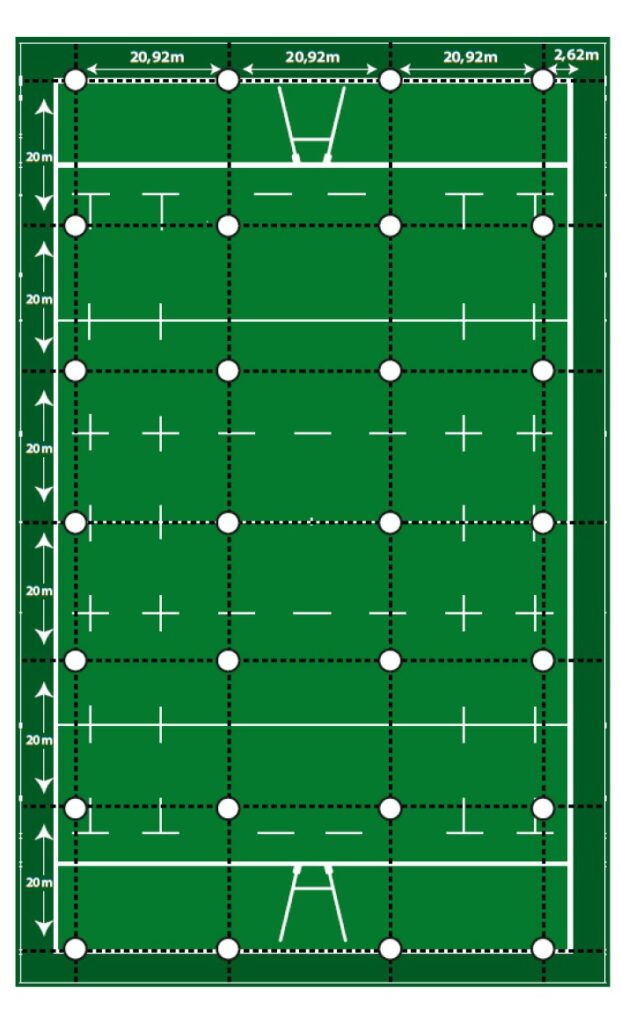 Glare rating – Rugby Pitch :
Glare rating – Rugby Pitch :
To avoid all discomfort glare, all our studies integrate the Glare Rating to study and analyse any risk of discomfort our lighting could cause.
For the lighting of rugby pitches and large outdoor sports fields, the GR must be less than 50 for pitch categories E1 (Top14), E2 (Pro D2), and E3 according to the grid defined by the FFR.
There are no requirements for the other categories. StopLED systematically takes glare rating into account, for maximum player comfort.
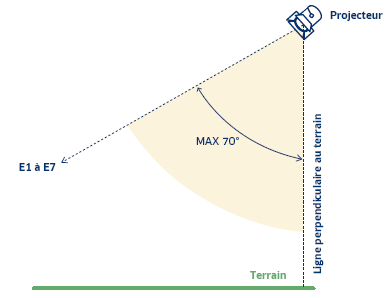 Floodlight tilt :
Floodlight tilt :
The maximum angle of the floodlights’ tilt (optical axis) in relation to the vertical must be less than or equal to 70° for all pitches.
To avoid discomfort glare, and also to avoid lighting outside the pitch which could disturb neighbours or biodiversity, floodlights must be positioned on poles at an angle of no more than 70°.
Technical specifications are a document necessary for any public procurement contract. They define the buyer’s requirements. For rugby pitch lighting, illuminance standards must be met to ensure that each lighted pitch is compliant.
If you have plans to light a rugby pitch, choose the relevant category below and use our “ Copy text” feature to incorporate the standard into your Specifications.
According to the lighting standard defined by the French Rugby Federation (2020):
To avoid any dark areas affecting play during a match, the horizontal illuminance uniformity factor for all lighting installations, defined as the ratio between the illuminance of the least illuminated point and the average horizontal illuminance over all 25 points (or 36 points for categories E1 and E2), may not be less than 0.70 for all categories.
According to the lighting standard defined by the French Rugby Federation (2020):
To avoid any dark areas affecting play during a match, the horizontal illuminance uniformity factor for all lighting installations, defined as the ratio between the illuminance of the least illuminated point and the average horizontal illuminance over all 25 points (or 36 points for categories E1 and E2), may not be less than 0.70 for all categories.
According to the lighting standard defined by the French Rugby Federation (2020):
To avoid any dark areas affecting play during a match, the horizontal illuminance uniformity factor for all lighting installations, defined as the ratio between the illuminance of the least illuminated point and the average horizontal illuminance over all 25 points (or 36 points for categories E1 and E2), may not be less than 0.70 for all categories.
According to the lighting standard defined by the French Rugby Federation (2020):
To avoid any dark areas affecting play during a match, the horizontal illuminance uniformity factor for all lighting installations, defined as the ratio between the illuminance of the least illuminated point and the average horizontal illuminance over all 25 points (or 36 points for categories E1 and E2), may not be less than 0.70 for all categories.
According to the lighting standard defined by the French Rugby Federation (2020):
To avoid any dark areas affecting play during a match, the horizontal illuminance uniformity factor for all lighting installations, defined as the ratio between the illuminance of the least illuminated point and the average horizontal illuminance over all 25 points (or 36 points for categories E1 and E2), may not be less than 0.70 for all categories.
By adding a management system to your rugby pitch LED lighting with our VariBOX units, you can adjust the lighting to different illuminance levels depending on use (Training / Competition).
Our VariBOX is a ready-to-install unit with a range of hard-wired and wireless lighting management and control options.
Recommended illuminance levels :
Recommended add-ons :
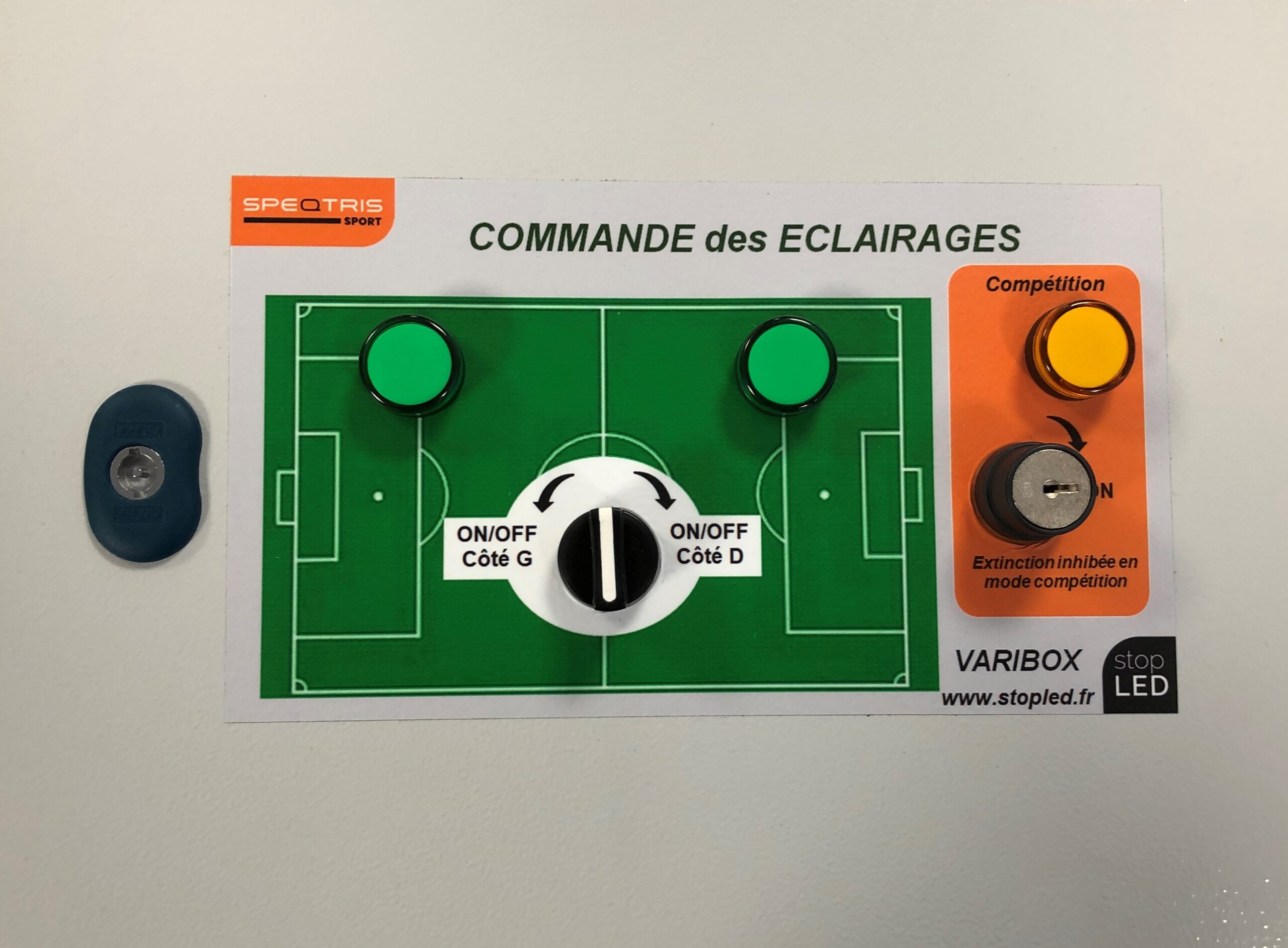
VariBOX for Rugby :
Notre expertise s'étend sur d'autres sports tels que :